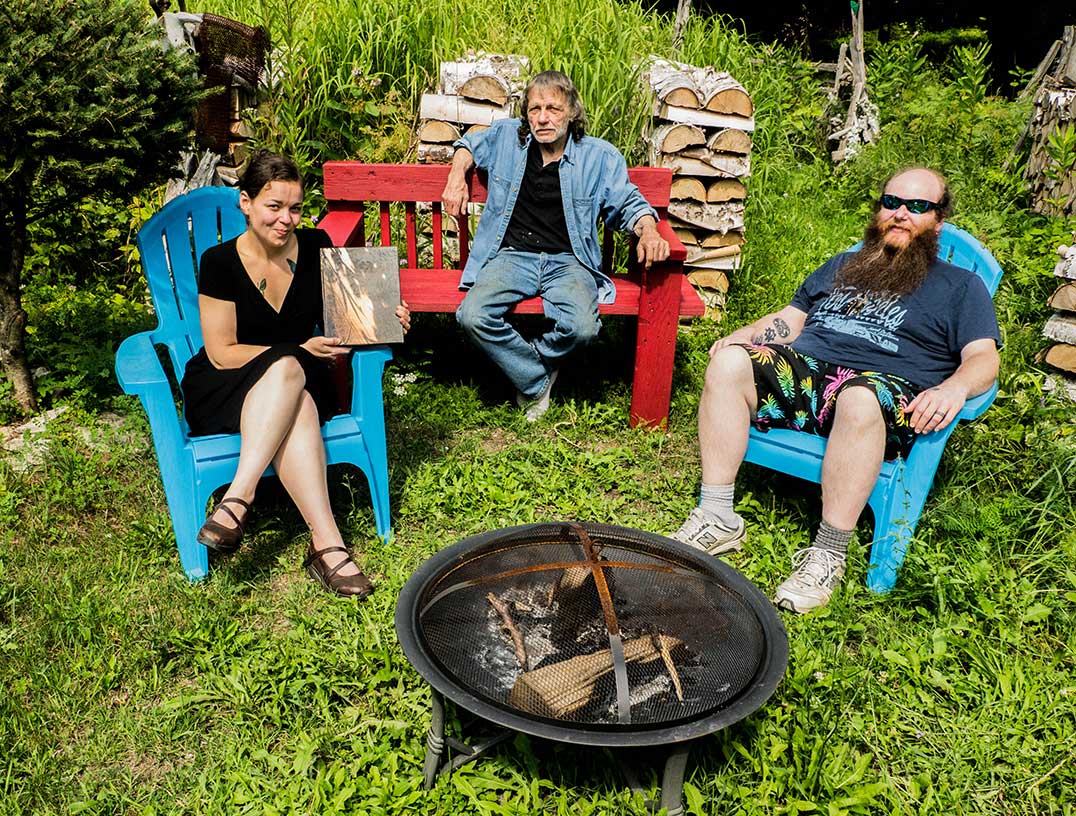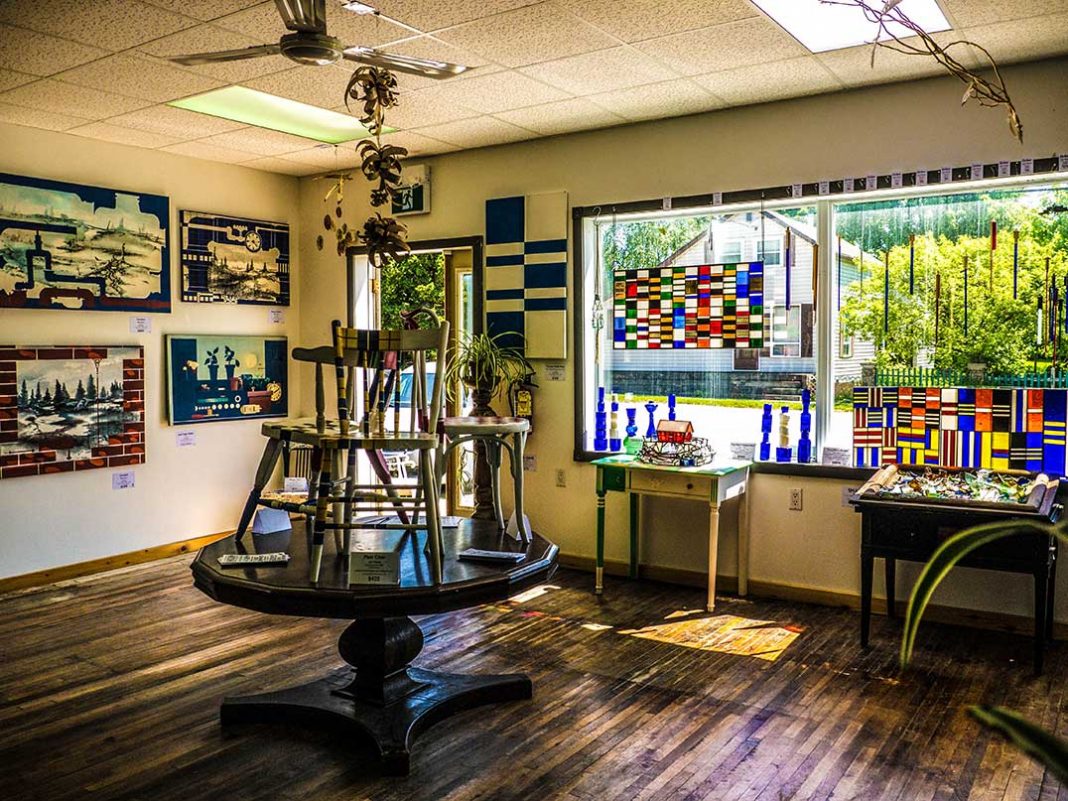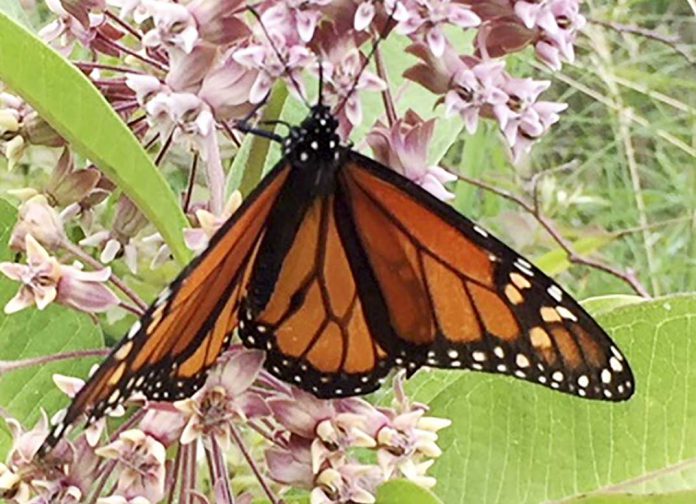PROVIDENCE BAY—For the legion of his fans and the newly converted, the ‘Jack Whyte Exhibit’ on this summer at the Mutchmor in Providence Bay reveals the singular, multi-media artist in a rare light.
It is a timely reminder that, despite the artist’s passing in November 2018, his art will never leave us.
Born in Toronto in 1939, Jack Whyte began his prolific and colourful lifetime career early, and was influenced as a young artist by summers spent at his parents’ cottage in Gore Bay. On his first trip to Manitoulin in the late ‘40s, the artist remembers: “I had never experienced such a landscape with its pock-marked limestone pavements, glacial boulders and clear skies…There was no electricity and the nights were black.”
In 1970, Jack built his own home studio across the driveway from his parents’ place, both tucked into a cedar grove inside the town’s limits, embellished with his mother’s rock gardens.
By the time he was a year old, baby Jack had been in his first commercial photo shoot, advertising Mickey Mouse branded products while hugging a doll-sized version of the celebrity rodent. More jobs came his way, eating Shreddies cereal, wearing Beehive hand knit socks to illustrate knitting pattern books. “This experience most definitely left its imprint,” writes the artist in his 455-page illustrated “memoir” entitled ‘Scrapbook: A Story of Art’ published in 2016. In it are many examples of the vivid advertising signs, logos and slogans, cartoons, packs of matches and cigarettes, soft drink bottles, a botanical book, all the colours, fonts and designs that first impressed themselves on Jack’s young mind, heavily annotated with his own autobiographical notes.
A sense of those first creative excitements never left Jack Whyte. Upon visiting his studio, one was struck by just how busy the artist was, all the time, pursuing new outlets in all media for his unceasing flights of the imagination. From graphite drawings to photographs, birch bark mobiles and stained glass panoramas to graphic magazines and painstaking, ethereal collages, all were made here and affixed in the windows, on the walls, floors and ceilings and stacked on every surface of every room. Embedded in the furniture and crockery were examples of Jack’s virtuosity; no square inch of his studio and home was left without his transformative touch.
Jack and his wife, Bonnie, lived here until her accidental death in a car crash in 1980 left the artist living alone with their six-year old son, Dylon. Now an actor, artist and designer, Dylon Whyte and his partner, writer and producer Ashley Whyte are the creators of this summer’s Jack Whyte Exhibit.
Growing up, Dylon remembers, “There was always art in the background.” Jack “made everything an adventure” for his son, including “Easter egg hunts, invisible ink messages, clues left around, wrestling, photo experiments with sparklers and long exposures, games like cards, horseshoes,” while he home-schooled him. “We were always living on the edge,” says Dylon, “it was always feast or famine.” And an adventure and an education in a life in art. At a young age, Dylon “figured out how to do art on a computer,” and later his considerable expertise with technology brought father and son together in making short movies and other computer generated projects.
Best known for his line sketches, drawings and exquisite watercolours and collages of now-iconic Manitoulin town and country scenes, powwow dancers and disappearing landscapes and ways of life, Jack Whyte is showing a whole other side of his art this summer. Curated by Dylon and Ashley Whyte, managers of Jack Whyte’s collected works, many previously unseen pieces–many from the ‘70s and ‘80s–are showcased as found in Jack’s studio home and installed in a gallery setting but with an intimate, homey feel.
Ashley wrote the descriptive paragraphs in the accompanying guide to each section of the exhibition. The hypnotizing ‘Time Art’ series is “a graphical representation of sports statistics,” for which the artist “developed algorithms – a form of visual storytelling.” She adds, “There’s a very serious sense of chaos in these, within the extreme order of the colours.”Another part of ‘Exhibit’ is “Stained Glass” – a riot of the “pure colours” of Jack Whyte’s glass constructions hangs before the gallery’s large front windows. His painted chairs, a bowl of paint tubes on a kitchen stool, a stained glass chest, the mobiles he called ‘The Drifters,’ the sports jerseys series of paintings, the graphic magazines lined up on shelves, all attest to an unstoppably questing, creative mind.

file photo by Isobel Harry
Ashley says visitors to the Jack Whyte Exhibit “are positively overwhelmed. There’s so much they hadn’t seen and they realize they only knew a small slice of Jack’s work. People are inspired by the variety and the intense creativity, and moved by the everyday things.” Especially moving to some are the ‘Assemblages,’ made during the last two years of the artist’s life, meticulously piling whatever everyday things he found into drawer-like frames, collections of gizmos that demand to be peered at closely, as close as the artist was when he made them.
“Jack Whyte gained a following for his records of history; his works capture what doesn’t exist anymore,” says Ashley Whyte. “This show brings us back to how open Jack was to experience and to his love of pure creativity from a non-judgmental perspective.”
www.whytesonline.com
The Jack Whyte Exhibit runs all summer at the Mutchmor Lofts, Gallery and Peace Café, 5263 Hwy 551, Providence Bay.




